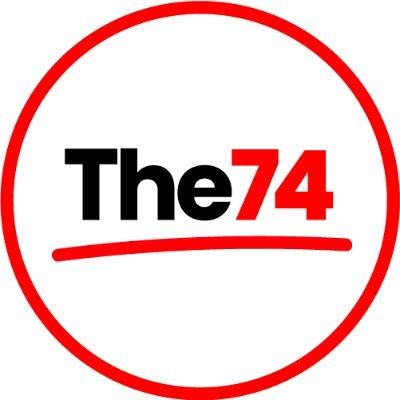Report on Summer Research Initiative: Advancing Sustainable Development Goals Through Gender Studies
Executive Summary
This report details a summer research project undertaken by Ednah Asiema, an international studies major at Muhlenberg College. The research investigates the socio-political factors contributing to gender inequality in China and Korea, with a specific focus on how traditional values and state policies impact the roles of women. This initiative directly aligns with and contributes to several United Nations Sustainable Development Goals (SDGs), most notably SDG 5 (Gender Equality), SDG 10 (Reduced Inequalities), and SDG 16 (Peace, Justice and Strong Institutions).
Research Overview and Objectives
Under the supervision of Assistant Professor Anh Le, the research examines the persistence of gender inequality through a comparative analysis of China and Korea. The project seeks to understand how differing political systems utilize similar cultural values to shape gender expectations.
- Analyze Historical and Cultural Influences: To investigate how traditional Confucian values have historically shaped and continue to influence societal expectations for women regarding marriage, family, and career paths.
- Examine State-Level Impact: To compare how government policies and state control in both nations reinforce or adapt gender norms, impacting women’s rights and autonomy. This directly addresses SDG 16 by evaluating the role of institutions in perpetuating inequality.
- Investigate Modern Social Phenomena: To explore the concept of “leftover women”—a term for educated, unmarried women in their late 20s and older—as a case study of the intersection between social pressure, gender roles, and professional achievement. This highlights a critical barrier to SDG 5.
- Contribute to Social Change: To generate insights that raise awareness of women’s rights and support future policy efforts aimed at creating more equitable societies, in line with the core mission of SDG 10.
Direct Alignment with Sustainable Development Goals (SDGs)
The research project is fundamentally linked to the global agenda for sustainable development. Its focus on the root causes of gender inequality provides critical insights relevant to the following SDGs:
- SDG 5: Gender Equality: The project’s core objective is to analyze and expose the mechanisms of gender inequality. By examining discriminatory social norms, the pressure on women regarding marriage and family, and barriers to autonomy, the research directly addresses targets related to eliminating all forms of discrimination and harmful practices against women.
- SDG 10: Reduced Inequalities: The research confronts inequality by exploring how power structures, cultural values, and political systems create and sustain social disparities based on gender. It seeks to understand the root causes of social exclusion, which is essential for promoting the inclusion of all, irrespective of gender.
- SDG 16: Peace, Justice and Strong Institutions: The study critically assesses how state policies and government institutions influence gender norms. This analysis of how political systems impact human rights and equality is crucial for building effective, accountable, and inclusive institutions at all levels.
- SDG 8: Decent Work and Economic Growth: By investigating the societal expectations placed on women concerning work and career, the research touches upon the barriers that prevent women from achieving full and productive employment and decent work, a key target of SDG 8.
Researcher’s Perspective and Future Implications
The researcher, Ednah Asiema, is motivated by a desire to connect academic theory with real-world impact and contribute to meaningful change in human rights. This project serves as a foundational experience for a future career in human rights law and international relations, where she aims to advocate for policies that address global inequalities.
Key Outcomes and Projections:
- Intellectual Growth: The research provides a deeper understanding of how complex political and cultural systems shape gender roles, connecting classroom learning with tangible global issues.
- Skill Development: The process challenges the researcher to manage and synthesize large volumes of complex information and navigate sensitive cross-cultural topics with accuracy and respect.
- Career Trajectory: This experience has solidified the researcher’s commitment to pursuing a law degree and a career in international relations. The goal is to actively contribute to the frameworks and policies that support the achievement of the SDGs, particularly those related to human rights, gender equality, and social justice.
Which SDGs are addressed or connected to the issues highlighted in the article?
-
SDG 5: Gender Equality
This is the most central SDG to the article. Ednah Asiema’s research directly focuses on “why gender inequality still exists” in China and Korea. The project examines how “traditional Confucian values and strict government control” have shaped women’s roles in marriage, family, and work, and investigates the social pressures on women, such as the “leftover women” phenomenon. The ultimate goal is to “raise awareness about women’s rights” and “contribute to efforts that challenge inequality globally.”
-
SDG 10: Reduced Inequalities
The article explicitly states that the research aims to “uncover the root causes behind social inequalities” and understand how “power structures affect people’s lives.” Asiema’s motivation is to “contribute to meaningful change” and “challenge inequality globally.” This aligns directly with SDG 10’s goal of reducing inequality within and among countries, particularly by addressing discrimination based on sex.
-
SDG 16: Peace, Justice and Strong Institutions
The research analyzes the role of the state in perpetuating gender norms. It looks at how “strict government control,” “different political systems,” and “state policies reinforce gender norms.” This connects to SDG 16’s focus on creating just and inclusive societies. Asiema’s interest in “human rights policy and law” and her desire to “advocate for human rights” further link her work to the principles of justice and strong, fair institutions.
What specific targets under those SDGs can be identified based on the article’s content?
-
Target 5.1: End all forms of discrimination against all women and girls everywhere.
The research project’s focus on the “leftover women” phenomenon, a term used to describe and pressure “unmarried women in their late 20s or older,” is a direct examination of a form of social discrimination against women.
-
Target 5.5: Ensure women’s full and effective participation and equal opportunities for leadership at all levels of decision-making in political, economic and public life.
The article mentions that the research explores women’s roles in “work” and what state policies mean for women’s “autonomy, and equality in the workplace.” This directly relates to ensuring women have equal opportunities in their economic lives.
-
Target 5.c: Adopt and strengthen sound policies and enforceable legislation for the promotion of gender equality and the empowerment of all women and girls at all levels.
Asiema’s research investigates how “state policies reinforce gender norms.” By analyzing these policies, her work contributes to the knowledge base needed to advocate for and create fairer policies. Her aspiration to work in “human rights policy and law” to “address global inequalities” aligns with the implementation of this target.
-
Target 10.3: Ensure equal opportunity and reduce inequalities of outcome, including by eliminating discriminatory laws, policies and practices and promoting appropriate legislation, policies and action in this regard.
The research project is fundamentally about understanding how “political systems use cultural values to either maintain or adapt gender expectations,” which leads to unequal outcomes for women. The goal is to “uncover the root causes behind social inequalities,” which is the first step toward eliminating discriminatory practices.
Are there any indicators mentioned or implied in the article that can be used to measure progress towards the identified targets?
-
Existence of discriminatory social norms and practices.
The article explicitly mentions the term “leftover women” as a social phenomenon. The prevalence and societal acceptance of such derogatory terms serve as a qualitative indicator of ongoing social discrimination against women (relevant to Target 5.1).
-
Presence of laws and policies that reinforce gender inequality.
The research is designed to analyze how “state policies reinforce gender norms” and how “strict government control” shapes women’s roles. The existence and nature of these policies are a direct, though qualitative, indicator of a lack of institutional support for gender equality (relevant to Targets 5.c and 10.3).
-
Perceived equality in the workplace and society.
The article notes the research is concerned with women’s “autonomy, and equality in the workplace and in society.” While not providing quantitative data, the study of these issues implies that the level of perceived equality and autonomy for women is a key indicator of progress (relevant to Target 5.5).
SDGs, Targets, and Indicators Analysis
| SDGs | Targets | Indicators (Implied in Article) |
|---|---|---|
| SDG 5: Gender Equality |
5.1: End all forms of discrimination against all women and girls everywhere.
5.5: Ensure women’s full and effective participation and equal opportunities…in…economic…life. 5.c: Adopt and strengthen sound policies…for the promotion of gender equality. |
Prevalence of discriminatory social norms (e.g., the “leftover women” phenomenon).
Level of women’s “autonomy, and equality in the workplace.” Analysis of “state policies [that] reinforce gender norms.” |
| SDG 10: Reduced Inequalities | 10.3: Ensure equal opportunity and reduce inequalities of outcome, including by eliminating discriminatory…policies and practices. | Existence of discriminatory practices rooted in “cultural values” and “political systems” that create social inequalities. |
| SDG 16: Peace, Justice and Strong Institutions | 16.b: Promote and enforce non-discriminatory laws and policies for sustainable development. | The role of “strict government control” and “state policies” in shaping gender roles, indicating the need for non-discriminatory policy enforcement. |
Source: muhlenberg.edu







